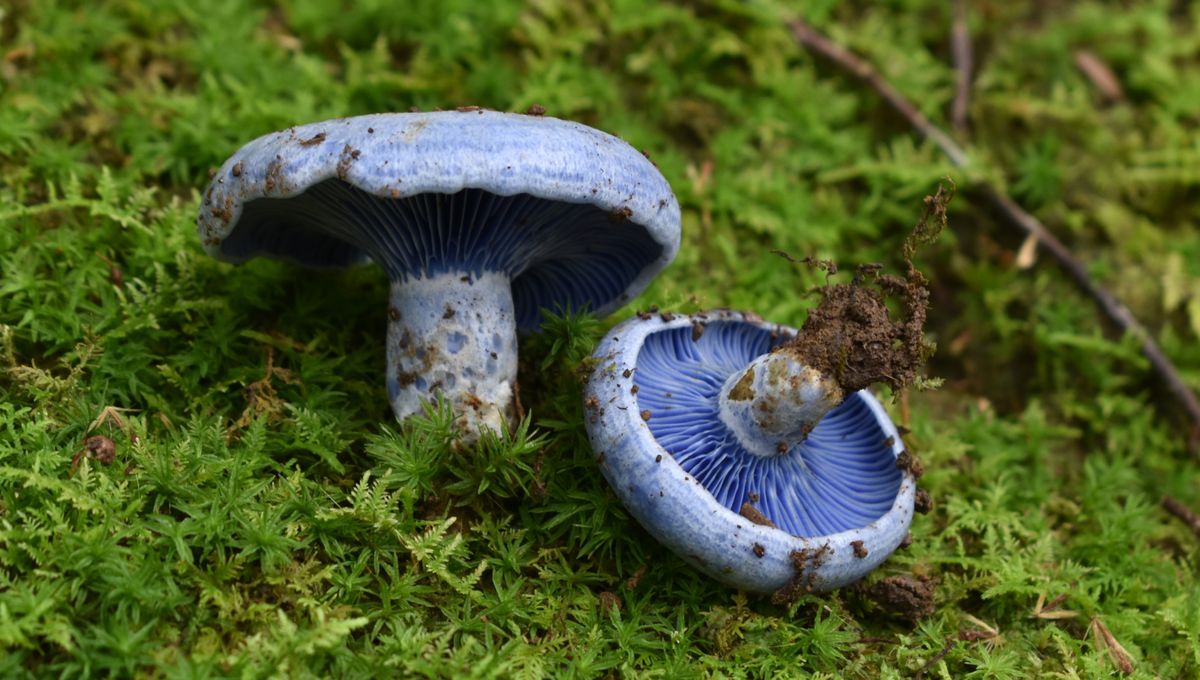
There is a truly astonishing molecule that has puzzled scientists for decades. Its name is azulene and it is known for its strikingly beautiful blue color. But it is its physical behavior that is utterly peculiar. It seems to stubbornly defy Kasha’s rule, the principle that explains how fluorescence or phosphorescence takes place.
This is an almost universal rule. Assume you have a molecule in what is known as the ground state, its minimum energy state. You can excite the molecule to higher energy states, but the steps between each are not all the same. The first step will be bigger than the second, the second bigger than the third, and so on.
This means that you need more energy to go from the ground state to the first excited state, but only a little bit more from the first state to the second. When the process happens in reverse, energy is emitted – usually as light – as the molecule drops from one state to the next lowest, a bit like going downstairs.
In fluorescence, we are actually interested in the opposite effect. Light is absorbed, the molecules are excited, and then they release light in another form as they go from an excited state to the ground state. Kasha’s rule says that the emission that we see always happens from the transition between the first excited state and the ground state. That’s because it is the widest of the energy gaps so is where a molecule will stay excited the longest, releasing energy as light.
Azulene doesn’t really seem to care about the fact that this rule is supposed to be universal. Its fluorescence is mostly observed from its second most excited level to the ground state, and not from the first. Researchers believe they have finally worked out why.
Azulene is an isomer of naphthalene, the traditional main ingredient of mothballs. It has the same chemical ingredients, 10 carbon atoms and eight hydrogen atoms, but arranged in a different way. Still it is, like naphthalene, an aromatic compound. This means that it has a ring-shaped structure and is highly stable.
But it turns out that in its first excited state, the molecule is actually antiaromatic, which means that is no longer stable. In fact, this excited state exists for just a trillionth of a second. The second excited state instead lasts for a nanosecond, so 1,000 times longer – enough to emit a photon.
This peculiar property of azulene turns out to be transferable. This could lead to interesting applications involving light, maybe in photocells, to manage light energy as efficiently as possible.
“I like theories that are so simple you can easily envision, remember, and then put them to use. And that’s exactly what we’ve succeeded in doing. We’ve answered the question of why molecules behave in a certain way, and we’ve done it using a very simple concept,” senior author Tomáš Slanina, from the Institute of Organic Chemistry and Biochemistry of the Czech Academy of Sciences, said in a statement.
In nature, azulene is found in the pigment of some mushrooms, some marine invertebrates, and even in certain plant oils. A derivative compound comes from chamomile oil, and has been used in medicine.
The study is published in the Journal of the American Chemical Society.
Source Link: Blue Molecule's Bizarre Fluorescence Has Finally Been Explained